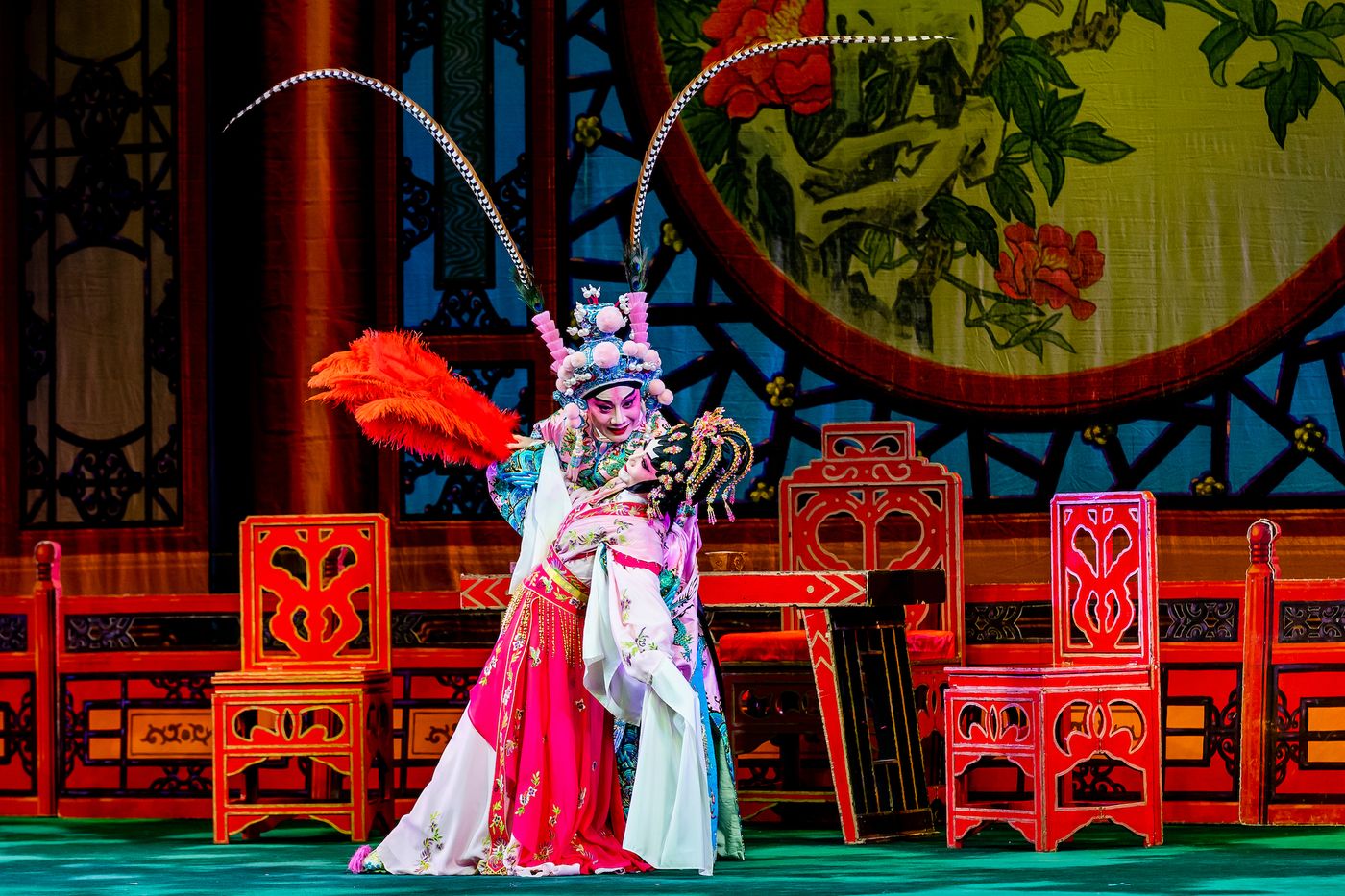Home>Production & Technology>Musician>How Old Is Musician Carlos Santana


Musician
How Old Is Musician Carlos Santana
Published: January 27, 2024
Discover the age of legendary musician Carlos Santana and explore his incredible musical journey. Learn more about the iconic musician and his contributions to the world of music.
(Many of the links in this article redirect to a specific reviewed product. Your purchase of these products through affiliate links helps to generate commission for AudioLover.com, at no extra cost. Learn more)
Table of Contents
Introduction
Carlos Santana is a legendary musician who has left an indelible mark on the world of music. With his unique style and unparalleled guitar skills, Santana has captivated audiences for over five decades. Born on July 20, 1947, in Autlán de Navarro, Mexico, Santana moved to San Francisco in the 1960s and became a symbol of the counterculture movement. His fusion of rock, blues, jazz, and Latin American rhythms has made him a pioneer in the genre of Latin rock.
Santana’s music is not only an expression of his talented musicianship but also carries a deeper spiritual and cultural significance. His melodies are infused with elements of spirituality, promoting peace, love, and unity. Santana’s music has the power to transcend boundaries and connect people from different walks of life. It is through his music that he has become a musical ambassador, spreading messages of hope, positivity, and social change.
With a career that spans over 50 years, Santana has been recognized with numerous prestigious awards, including Grammy Awards, Billboard Latin Music Awards, and the Kennedy Center Honors. He is known for his soulful guitar solos, distinct sound, and ability to create electrifying performances. Santana’s performances are not only a feast for the ears but also a spectacle for the eyes, combining high-energy rhythms with mesmerizing visuals.
In this article, we will delve into Carlos Santana’s early life, his musical journey, his rise to fame, the evolution of his music style, his notable collaborations and discography, as well as insights into his personal life. We will also explore Santana’s lasting legacy and the impact he has had on the music industry and the world at large.
Join us as we embark on a musical journey through the life and achievements of the iconic musician, Carlos Santana.
Early Life and Musical Journey
Carlos Santana was born on July 20, 1947, in Autlán de Navarro, a small town in the state of Jalisco, Mexico. Growing up in a musical household, Santana was exposed to various genres of music from an early age. His father, a mariachi violinist, and his mother, a vocal performer, instilled in him a deep appreciation for music and its emotional power.
At the age of five, Santana’s family moved to Tijuana, where he discovered his love for the guitar. He would spend countless hours practicing and honing his skills, becoming increasingly proficient with each passing day. His dedication and talent did not go unnoticed, as he was soon recognized as a prodigious young guitarist in the local music scene.
In 1961, Santana’s family moved once again, this time to San Francisco, California. It was in this vibrant and culturally diverse city that Santana’s musical journey truly began to take shape. He immersed himself in the burgeoning music scene of the 1960s, encompassing the sounds of rock, blues, jazz, and Latin American rhythms.
During this time, Santana formed the Santana Blues Band, later renamed simply as Santana. The band became known for their electrifying performances and unique fusion of musical genres. Santana’s distinctive guitar style, characterized by his soulful and expressive playing, quickly gained recognition among music enthusiasts.
In 1969, Santana released their self-titled debut album, which propelled them to international fame. The album featured the iconic track “Evil Ways” and showcased Santana’s unprecedented blend of rock, Latin, and psychedelic influences.
With their breakthrough album, Santana garnered attention for their mesmerizing live performances, infused with vibrant energy and infectious rhythms. Santana’s stage presence and Carlos Santana’s blistering guitar solos became legendary, solidifying their status as one of the most influential bands of the era.
Carlos Santana’s musical journey continued to evolve as he explored new territories and collaborated with artists from various genres. His visionary approach to music-making and his ability to seamlessly blend different styles set him apart from his contemporaries.
Throughout his career, Santana has released numerous albums, with the most notable ones including “Abraxas,” “Supernatural,” and “Shaman.” Each album showcases Santana’s ability to continuously push the boundaries of his sound while staying true to his roots.
Join us in the next section as we delve deeper into Santana’s rise to fame and the impact he has had on the music industry.
Rise to Fame
Carlos Santana’s rise to fame can be attributed to his exceptional talent, unique sound, and his ability to captivate audiences with his electrifying performances. After the release of their self-titled debut album in 1969, Santana gained significant traction, but it was their performance at the historic Woodstock music festival in 1969 that catapulted them to superstardom.
It was during this iconic moment that Santana’s blend of rock, Latin, and psychedelic music reached a global audience, leaving an unforgettable impression on music enthusiasts worldwide. The band’s energetic and soulful performance captured the essence of the counterculture movement of the time, drawing in a massive following and solidifying their place in rock music history.
Santana’s success further grew with the release of their second album, “Abraxas,” which showcased the band’s versatility and musical prowess. The album featured notable hits such as “Oye Como Va” and “Black Magic Woman,” further cementing Santana’s reputation as a force to be reckoned with.
With their unique blend of infectious rhythms and Carlos Santana’s captivating guitar solos, the band continued to dominate the charts and win over fans. Their music resonated with a diverse range of listeners, transcending cultural and language barriers.
In the 1970s, Santana underwent some lineup changes but managed to sustain their success. They released successful albums such as “Santana III” and “Caravanserai,” showcasing their ability to experiment with different styles and musical expressions.
However, Santana faced a period of commercial decline in the late 1970s and early 1980s. The band went through several lineup changes and struggled to capture the same level of success they had achieved in their early years.
But Santana made a triumphant comeback in 1999 with the release of their album “Supernatural.” This album marked a turning point in Santana’s career, as it achieved widespread commercial success and garnered critical acclaim. The album featured collaborations with renowned artists such as Rob Thomas, Eric Clapton, and Lauryn Hill, and was crowned with nine Grammy Awards, including Album of the Year and Record of the Year for “Smooth.”
Since then, Santana has continued to release new music and collaborate with a wide range of artists across different genres. His fusion of rock, Latin, and world music has attracted a new generation of fans while maintaining his dedicated following.
Carlos Santana’s unique sound, soulful guitar playing, and undeniable charisma have made him one of the most influential and enduring figures in the history of rock music. His journey to fame is a testament to his unwavering passion, musical innovation, and his ability to connect with audiences on a profound level.
In the next section, we will explore the evolution of Carlos Santana’s music style and how he has continued to redefine his sound throughout his career.
Evolution of Music Style
Throughout his illustrious career, Carlos Santana has continually evolved his music style, pushing boundaries and defying expectations. From his early days in the 1960s as a pioneer of Latin rock, Santana has continuously blended various genres, resulting in a sound that is uniquely his own.
In the early stages of Santana’s career, the band’s music was heavily influenced by Latin American rhythms, combined with elements of rock, blues, and jazz. They fused catchy melodies with infectious grooves, creating a vibrant and energetic sound that resonated with audiences worldwide.
As Santana’s journey progressed, his music began to incorporate elements of psychedelic rock, particularly evident in their breakthrough album, “Abraxas.” This experimentation with different sounds and textures added depth and complexity to their music, setting them apart from their contemporaries.
Santana’s music style is also characterized by his distinct guitar playing. His soulful and emotive guitar solos have become his trademark, showcasing his technical prowess and his ability to convey deep emotions through his instrument. Santana’s guitar work is a beautiful fusion of melodic phrasing, fiery solos, and a unique tonal quality that immediately captivates listeners.
In the 1970s, Santana explored jazz-infused rock with albums such as “Caravanserai” and “Welcome,” demonstrating his versatility and musical experimentation. These albums showcased Santana’s willingness to venture into uncharted territories and embrace new sounds.
In the late 1970s and early 1980s, Santana incorporated elements of funk and pop into his music, adapting to the changing musical landscape of the time. The band’s collaborations with renowned vocalists such as Greg Walker and Alex Ligertwood brought a fresh flavor to their music, expanding their appeal to a wider audience.
Santana’s music evolution took another significant turn in the late 1990s with the release of the album “Supernatural.” This album saw Santana collaborating with a diverse range of artists from different genres, including pop, R&B, and hip-hop. The result was a fusion of styles that showcased Santana’s ability to seamlessly blend different sounds while staying true to his signature guitar-driven sound.
Since “Supernatural,” Santana has continued to explore new musical territories, incorporating elements of world music, reggae, and even electronic sounds. He has collaborated with artists such as Juanes, Ziggy Marley, and Los Fabulosos Cadillacs, further expanding his musical horizons and embracing global influences.
Carlos Santana’s ability to constantly reinvent himself and explore new musical frontiers is a testament to his artistic vision and creative spirit. His evolution as an artist has allowed him to remain relevant throughout the years while preserving the essence of his distinctive sound.
Join us in the next section as we explore Carlos Santana’s notable collaborations and his extensive discography.
Collaborations and Discography
Carlos Santana’s illustrious career is marked by numerous collaborations with esteemed artists from various genres. His ability to merge different musical styles and work with diverse talents has resulted in a rich and dynamic discography.
One of Santana’s most iconic collaborations came in 1970 when they joined forces with legendary guitarist and blues-rock icon, Eric Clapton, for the album “The Swing of Delight.” This collaboration showcased the virtuosity of both guitar legends and created a fusion of styles that left a lasting impression on fans.
Another notable collaboration in Santana’s discography is their collaboration with jazz saxophonist, Wayne Shorter, on the album “Beyond Appearances” in 1985. This album delved into a jazz-infused sound, showcasing the versatility and improvisational skills of both Santana and Shorter.
Santana’s collaboration with renowned opera tenor, Plácido Domingo, on the album “Veracruz” in 1992 demonstrated the universality of Santana’s music. The fusion of their respective styles resulted in a mesmerizing and passionate musical experience that transcended genres.
In 1999, Santana released their groundbreaking album, “Supernatural,” which featured an array of collaborations with artists such as Rob Thomas, Lauryn Hill, and CeeLo Green. The album’s massive success propelled Santana back into the spotlight and showcased his ability to seamlessly integrate his signature sound with contemporary pop and R&B influences.
In subsequent years, Santana continued to collaborate with a diverse range of artists. His collaboration with Michelle Branch on the album “Shaman” in 2002 produced the hit single, “The Game of Love.” He also worked with various Latin artists, including Juanes, Alejandro Lerner, and Los Fabulosos Cadillacs, further exploring his Latin roots and expanding his musical connections.
With a discography spanning over 25 studio albums, including critically acclaimed releases like “Abraxas,” “Marathon,” and “Amigos,” Santana has consistently delivered compelling and influential music. His albums showcase his ability to merge genres, experiment with different sounds, and continue to evolve as an artist.
From his early Latin rock sound to his ventures into jazz, funk, pop, and world music, Santana has forged a path of musical exploration and innovation. His collaborations have not only solidified his status as a musical pioneer but have also introduced his sound to new audiences around the world.
Next, we will delve into Carlos Santana’s personal life and provide insights into the man behind the music.
Personal Life
Carlos Santana’s personal life is just as intriguing and vibrant as his music. Beyond the stage, Santana is known for his spiritual beliefs, philanthropy, and his commitment to spreading messages of love, peace, and unity.
Throughout his life, Santana has credited spirituality as a guiding force in his music and personal journey. He draws inspiration from various spiritual practices and has incorporated elements of spirituality into his music. Santana believes in the power of music to uplift and heal, and he sees himself as a conduit for channeling positive energy through his guitar.
Aside from his musical endeavors, Santana is actively involved in philanthropic work. He is a strong advocate for humanitarian causes and has established the Milagro Foundation, which supports underprivileged youth around the world by providing education, healthcare, and art programs. Santana’s foundation aims to empower young people and help them realize their dreams.
Carlos Santana’s personal life has also seen its share of ups and downs. He has been married three times, with his current wife, Cindy Blackman Santana, being a renowned drummer and frequent collaborator. Santana has three children from previous marriages and has spoken about the importance of family in his life.
In 2019, Santana published his memoir, “The Universal Tone: Bringing My Story to Light,” in which he reflects on his life, music career, and personal experiences. The book offers insights into his journey, struggles, and triumphs, providing a deeper understanding of the man behind the iconic music.
Despite the challenges and successes Santana has faced in his personal life, he remains grounded and driven by his passion for music and making a positive impact. His commitment to using his platform for good has made him an influential figure both within the music industry and beyond.
As we move forward, we will explore Carlos Santana’s lasting legacy and the profound impact he has had on the music industry.
Legacy and Impact
Carlos Santana’s legacy as a musician and cultural icon is undeniable. His impact on the music industry spans over five decades and continues to resonate with audiences worldwide. Santana’s fusion of rock, Latin, and world music has inspired countless artists and transcended genres, leaving an indelible mark on the musical landscape.
One of Santana’s greatest contributions to music is his role in popularizing Latin rock. By infusing his music with Latin American rhythms and incorporating Spanish lyrics, Santana brought Latin music to the forefront of mainstream rock, paving the way for future Latino artists to gain recognition and success in the industry.
Santana’s distinctive sound and soulful guitar playing have influenced generations of musicians. He has inspired countless guitarists to explore new techniques, push musical boundaries, and blend genres, creating a ripple effect of innovation in the music community.
Moreover, Santana’s collaborations with artists from diverse backgrounds have showcased the power of unity and cultural exchange. His ability to bridge musical worlds has fostered a sense of inclusivity and brought people from different cultures and walks of life together through the universal language of music.
Santana’s impact extends beyond his music. His philanthropic efforts through the Milagro Foundation have provided vital support to underprivileged youth, helping to improve their lives and nurture their creative potential. Santana’s commitment to using his platform for social change has made him an influential advocate for positive transformation.
Recognition for Santana’s contributions to music and humanity has come in the form of numerous awards and honors. He has received multiple Grammy Awards, including a Lifetime Achievement Award and induction into the Rock and Roll Hall of Fame. He has also been recognized for his activism and dedication to social causes.
Santana’s music continues to resonate with fans of all generations. His timeless hits like “Oye Como Va,” “Black Magic Woman,” and “Smooth” remain staples of radio playlists and his live performances are revered for their energy, passion, and spiritual connection.
Carlos Santana’s legacy as a musical visionary, spiritual guide, and philanthropist is a testament to his enduring talent and his commitment to making a positive impact on the world. His music has the power to uplift, unite, and inspire, leaving an undeniable imprint on the hearts and souls of listeners.
As we conclude our exploration of Carlos Santana’s life and achievements, it is clear that his legacy will continue to inspire and influence generations to come, leaving a lasting impact on the world of music and beyond.
Conclusion
Carlos Santana’s musical journey is nothing short of extraordinary. From his humble beginnings in Mexico to becoming a globally respected musician, Santana has left an indelible mark on the world of music and beyond. His unique fusion of rock, blues, jazz, and Latin American rhythms has not only revolutionized the genre of Latin rock but has also inspired countless artists and resonated with millions of fans worldwide.
Throughout his career, Santana has continuously evolved his music style, pushing boundaries and defying categorization. His soulful guitar playing, infectious rhythms, and spiritual undertones have made his music a catalyst for unity, love, and social change.
In addition to his musical contributions, Santana’s philanthropy and advocacy for underprivileged youth through the Milagro Foundation highlight his commitment to making a positive impact on society. He embodies the belief that music has the power to heal and transform lives.
Carlos Santana’s influence extends far beyond his music. His collaborations with artists from different backgrounds have showcased the universality of music and the potential for cultural exchange and understanding. Santana’s ability to bridge musical worlds has created a legacy of inclusivity and unity.
As Santana’s career continues to thrive, his music remains timeless. His electrifying performances and iconic guitar solos will forever captivate audiences and serve as a testament to his unyielding passion and dedication.
Carlos Santana’s legacy is one that will continue to inspire and resonate with generations to come. His ability to transcend genres, cultures, and boundaries has cemented his status as a true icon in the music industry. Through his music and philanthropy, Santana has touched the hearts of millions, leaving behind a profound and lasting impact.
As we look to the future, we can only imagine the ways in which Santana’s music will continue to shape and inspire the world. His unwavering passion, innovative spirit, and commitment to spreading messages of love and unity serve as an enduring legacy that will live on for generations to come.











